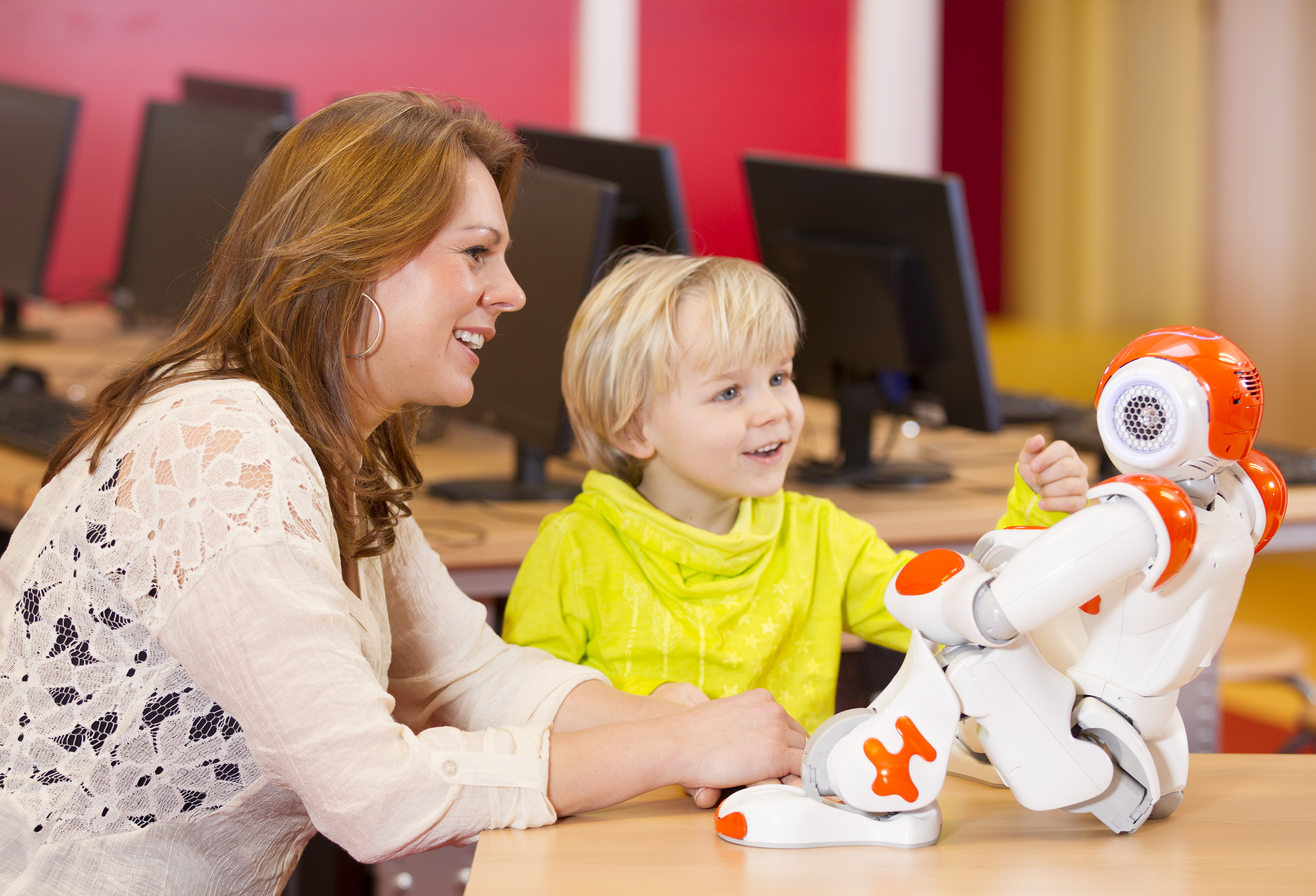
Now that coding in the classroom has become the norm in many schools, it’s time to turn our attention to something new: robotics in the classroom. Robots are a cool educational tool that can combine programming with hands-on learning, innovation and collaboration. You don’t need a dedicated STEM robotics curriculum to utilize them. All you need are some out-of-the-box educators who are ready to work with the realities of 21st century learning.
There are many different ways you can use robots in education. The specific methods depend on what your needs are, how old your students are, what kind of robots you have, and what subject(s) you are teaching. This is true for students from elementary school all the way through university and beyond. Robots can be programmed as part of a stem lesson, help students who are unable to attend class in person, be used to build products, and so much more.
Even elementary school students can use educational robots. They can be used to teach the most basic levels of programming starting from a very young age. They can also be incorporated into Humanities lessons. This might sound strange, but it actually makes a lot of sense. For example, at the A. Harry Moore School in Jersey City, New Jersey, students have used robots to choose the right answer in reading comprehension exercises by steering them to a card with the picture of the answer. Additionally, they also used robots to find different locations on a map. Robots can also help students practice listening. The teacher can ask a question out loud and the students then have to steer the robots to the proper location based on what the teacher asked. This type of exercise is also great for an EFL classroom where students are practicing following instructions in English.
While coding is definitely an important component of 21st century education, there are some disadvantages that come with the territory. Kids already spend hours every day staring at a screen in a sedentary position, and coding classes often require more of the same thing. Moreover, many coding classes focus on individual work, rather than encouraging group work and collaboration. So how can you help students develop important technological skills while avoiding the pitfalls? Consider bringing robotics into your classroom. Robots can be used to teach coding, but they also require a hands-on, physical component which is not included in general coding. Also, groups of students can easily work on coding a robot together, whether they are in the building stages or the testing stages. When working with a robot, you can’t just sit and stare at a screen, you need to get up to set it up and make sure that it is working properly.
Teleprescence robots are video screens on wheels which can be controlled remotely. A person in another location can control the movements of the robot through a computer, while their voice and picture are displayed in real-time for videoconferencing. Students who are ill or otherwise unable to attend class can use teleconference robots to participate in lessons, interact with peers and collaborate on assignments. This is an amazing way for those who are home or in the hospital for extended periods of time to keep up with the work and be a real part of the classroom community.
When it comes to using robots in education, the sky’s the limit. There is no telling what great ideas educators will come up with when given the opportunity to use them. Although educational robots do require a bit of a financial investment, in the long run they are sure to prove their worth and become a fast favorite among teachers and students of various subjects.
